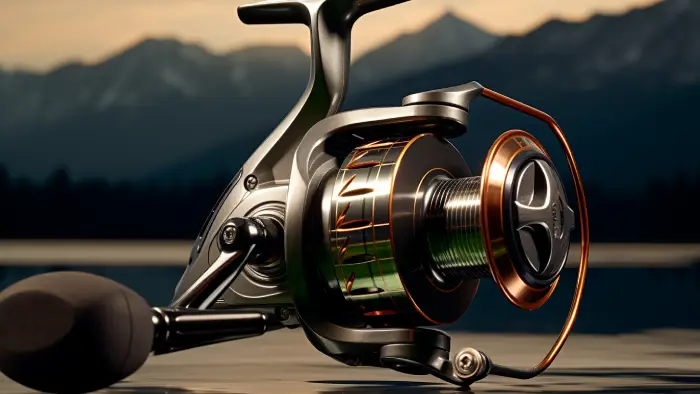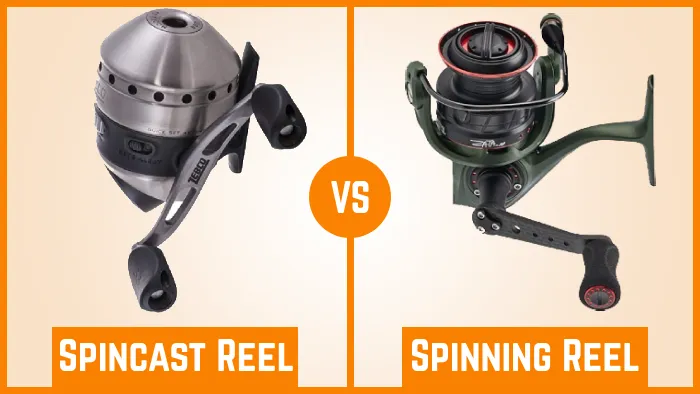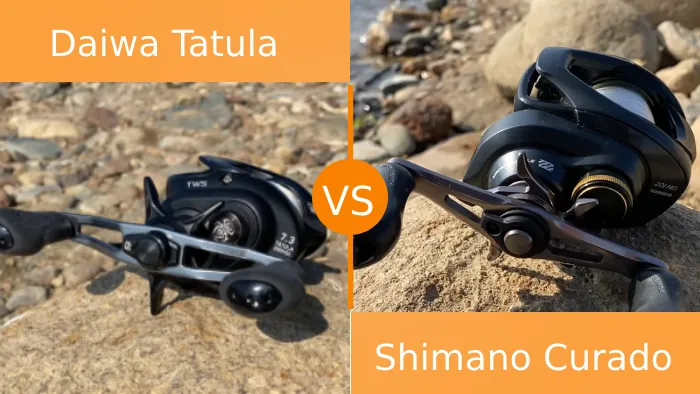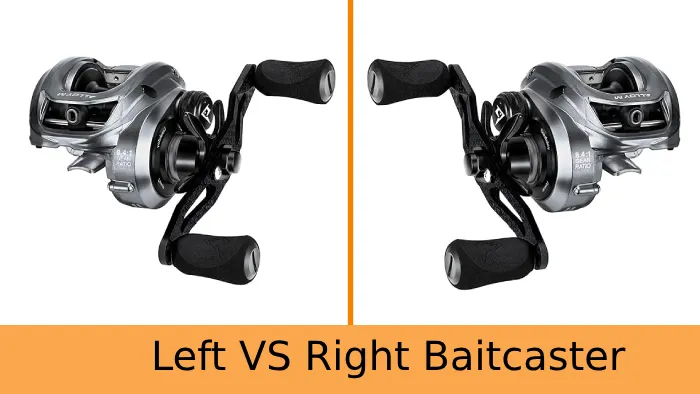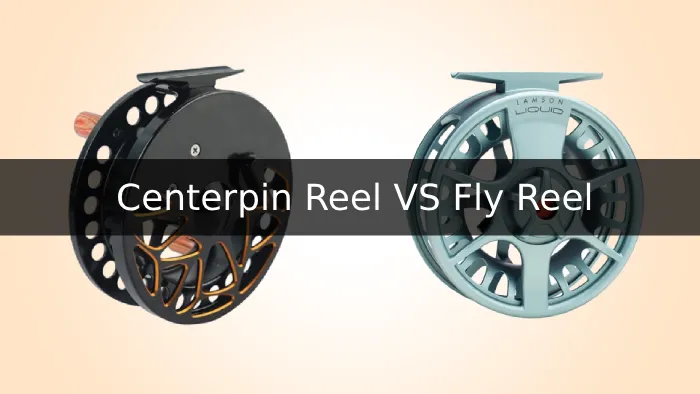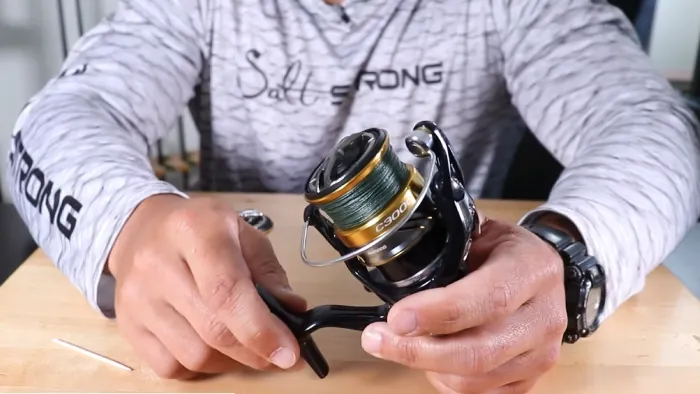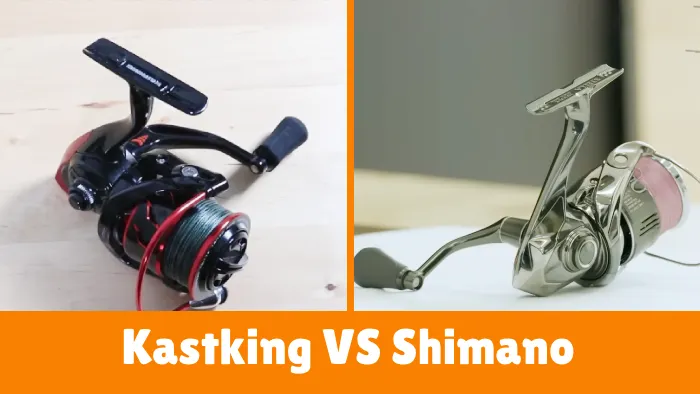What Size Reel for Salmon Fishing: A Comprehensive Guide
The reel size you choose for salmon fishing can make all the difference between a successful angling adventure and a missed opportunity. It’s a question that many anglers grapple with: what size reel is ideal for pursuing salmon fish?
Generally, reel sizes falling within the 3000 to 5000 range are frequently recommended for salmon fishing, as they offer versatility and reliability for various salmon species and fishing scenarios. You can also choose 8000 reel sizes for specific circumstances and based on your preferences.
We will discuss the reel sizes commonly used for salmon fishing and the factors that determine what size reel is appropriate for salmon fishing in detail.
3 Size Reel for Salmon Fishing
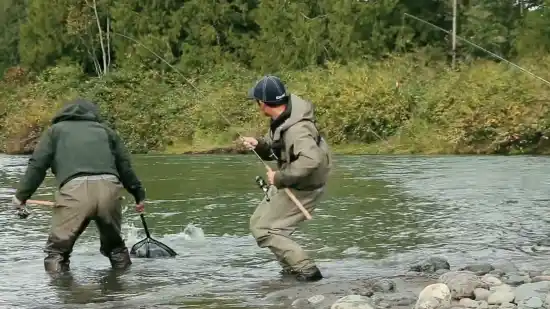
Regarding salmon fishing, there are three common reel sizes.
- Small reels (1000-3000)
- Medium reels (4000-6000)
- Large reels (7000-10000)
Take a closer look at each reel size in detail, so you can determine which size of fishing reel you should use when salmon fishing.
1. Small Reels (1000-3000)
Regarding small reels for salmon fishing, the most common sizes range from 1000 to 3000. These reels are ideal for light to medium salmon fishing and offer several advantages.
One of the key benefits is their lightweight design, which allows for easy handling and reduces fatigue during long fishing trips.
Small reels in this size range also provide precision casting, allowing you to target and present your bait to the salmon accurately. It’s crucial in salmon fishing, as the fish can be quite selective and require precise presentation to entice a bite.
2. Medium Reels (4000-6000)
For medium reels commonly used in salmon fishing, you should consider sizes ranging from 4000 to 6000. These sizes balance line capacity and versatility, making them suitable for a wide range of salmon fishing scenarios.
A medium-sized reel, such as a 4000 or 6000, offers enough line capacity to accommodate the powerful runs and long-distance fights that salmon are known for. This is particularly important when targeting larger salmon species, such as Chinook or King salmon, which can exceed 40 pounds.
The 4000 to 6000 range also provides enough drag strength to control and tire out these strong fish. Additionally, medium-sized reels are often designed with corrosion-resistant materials and smooth drag systems, ensuring durability and performance in harsh freshwater and saltwater environments.
When selecting a medium reel for salmon fishing, consider the specific fishing conditions and the size of the salmon you’re targeting to ensure you have the appropriate line capacity and strength.
3. Large Reels (7000-10000)
With large reels (7000-10000), you can confidently tackle and reel in those massive salmon in challenging fishing environments. These reels are specifically designed to handle the power and strength of big salmon, ensuring that you have the necessary equipment to land your catch successfully.
Large reel sizes offer high line capacity, allowing you to hold a significant amount of fishing line. In particular, it is very important when dealing with large salmon that may take long, powerful runs. Additionally, these reels feature powerful drag systems that can withstand the intense pressure these fish exert.
The robust construction of large reels ensures durability and longevity, as they’re built to withstand the harsh conditions of salmon fishing. So, when you’re targeting those trophy-sized salmon in Texas or wherever you plan to fish, make sure to equip yourself with a large reel to maximize your chances of success.
Factors That Determine What Size Reel Is Suitable for Salmon Fishing
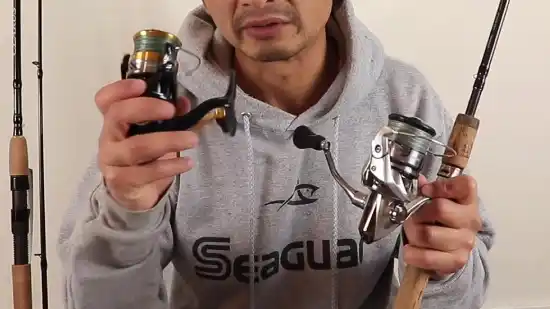
When determining what size reel is suitable for salmon fishing, several important factors must be considered.
1. Salmon Species
If you’re targeting different salmon species, the size of the reel you choose will depend on factors such as the size of the Chinook and Coho salmon. These two species of salmon vary in size, with Chinook salmon being the largest. Chinook salmon can reach sizes of up to 50 pounds or more, while Coho salmon typically range between 8 to 12 pounds.
Considering the size and weight of these salmon, it’s important to select a reel that can handle the heavy load.
For Chinook salmon, a larger reel with a higher line capacity and a strong drag system is recommended to withstand the power and strength of these fish. On the other hand, a smaller reel with a medium line capacity would be suitable for targeting Coho salmon.
2. Fishing Location
The location where you plan to fish for salmon is crucial in determining the size of the reel you should use. If fishing in rivers or streams, a smaller reel with a lighter line capacity may be suitable. These reels are designed for casting in tight spaces and can handle the smaller salmon species typically found in freshwater environments.
On the other hand, if you’re fishing in larger bodies of water, such as lakes or saltwater, a larger reel with a heavier line capacity is recommended. These reels provide the strength and line capacity needed to handle the larger salmon species and the potential for longer fights.
Matching your reel size to the fishing location is important to ensure optimal performance and success in salmon fishing.
3. Fishing Technique
Consider your fishing technique when determining the appropriate size reel for salmon fishing. The technique you choose will greatly impact the reel characteristics you require.
For trolling, a larger reel with a high line capacity is recommended. This will allow you to let out more lines and cover a wider area.
A smaller reel with a faster retrieval rate is ideal if you prefer casting. This will enable you to quickly retrieve your line after casting and make multiple casts in less time.
Fly fishing for salmon requires a specialized fly reel that’s designed to hold a specific weight of the fly line. These reels are typically lightweight and have a smooth drag system to handle the powerful runs of the fish.
Ultimately, your fishing technique will determine the size and capabilities of the reel you need for a successful salmon fishing experience.
4. Line Capacity
When choosing a reel for salmon fishing, you should consider the line capacity and the factors that determine the suitable size.
Line capacity refers to the amount of fishing line that a reel can hold. For salmon fishing, it’s essential to have a reel with sufficient line capacity to handle the powerful runs and jumps of these fish.
Factors determining the appropriate line capacity include the size and species of salmon you’re targeting, the fishing technique you plan to use, and the type of line you prefer.
Larger salmon species, such as Chinook or Coho, require reels with higher line capacity compared to smaller species like Pink or Chum salmon. Additionally, if you plan to use techniques that involve long casts or trolling, you’ll need a reel with a larger line capacity.
Lastly, the type of line you choose, whether it’s monofilament, fluorocarbon, or braided, will also influence the necessary line capacity.
5. Drag System
A reliable drag system is crucial for determining the suitable size reel for salmon fishing. A drag system determines how much resistance the fish experiences when pulling on the line. When fighting large, powerful salmon, a strong and smooth drag system is essential to prevent the line from breaking and tiring out the fish.
The drag system consists of a set of discs or washers that create friction against each other when the fish pulls on the line. The materials used for these discs can vary, with carbon fiber being a popular choice due to its strength and heat resistance.
The size of the drag system is determined by the size of the fish you’re targeting. Larger salmon require a larger drag system to handle their strength and power. A reel with a weak or inadequate drag system may result in lost fish and frustration.
Therefore, choosing a reel with a drag system that matches the size and power of the salmon you’re targeting is important.
How to Maintain and Care for Your Salmon Fishing Reel?
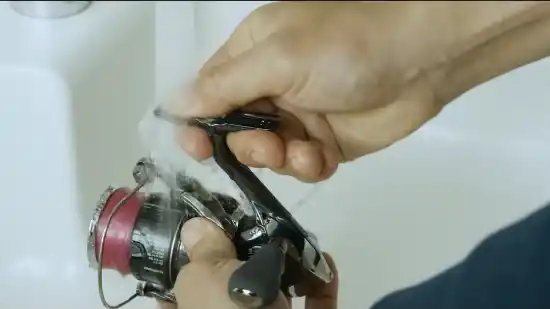
To ensure the longevity and optimal performance of your salmon fishing reel, you should follow several key maintenance processes.
1. Basic Cleaning
Maintaining your salmon fishing reel requires basic cleaning. After each fishing trip, it’s important to rinse the reel with fresh water to remove any salt, dirt, or debris that has accumulated over time.
However, it’s crucial to avoid using high-pressure nozzles to clean the reel, especially if you’re dealing with a spinning reel. High-pressure nozzles can damage the delicate parts of the reel and potentially cause it to malfunction.
2. Lubrication
Lubrication is another important aspect of maintaining your salmon fishing reel. Accessible moving parts of the reel, like the spool, handle, and bail, require consistent lubrication.
However, it’s essential to avoid using heavy oil or grease. Light lubricants like silicone or Teflon-based lubricants are perfect for your salmon fishing reel. Remember to re-lubricate at least monthly or more often if you’re using the reel regularly.
3. Degreasing
Periodically removing old grease from your salmon fishing reel is essential for improved performance. Applying a light lubricant after degreasing the reel can also significantly help improve your fishing experience.
For effective degreasing, use a solvent or isopropyl rubbing alcohol. These products remove old grease and leave the reel ready for light lubrication, ensuring your salmon fishing reel stays in tip-top shape for longer.
4. Storage
Storing your salmon fishing reel is another essential component of carrying out long-term maintenance. It’s always a safe practice to store reels with loosened drags between fishing trips. This step helps prevent drag washer compression, ensuring your drag stays in good working condition.
By loosening the drag, you ensure that the pressure on the drag washer is significantly reduced, increasing the lifespan of your salmon fishing reel.
5. Line Replacement
Replacing your salmon fishing reel line when it shows signs of wear or after encounters with hard-fighting fish are necessary. Over time, the fishing line collects dirt, debris, and salt. This accumulation reduces the effectiveness of the line and ultimately weakens it.
Checking for wear and tear in your line is crucial because it can break and cause you to lose your catch. Replacing the line every few fishing trips will ensure you have the right equipment you need to reel in your dream salmon catch.
How is reel size typically measured for salmon fishing?
Reel size for salmon fishing is typically measured using numerical values, such as 1000, 2500, or 5000, which are often printed on the reel or found in its specifications. These numbers usually indicate the reel’s size category and can help you determine its capacity and suitability for specific fishing scenarios.
The first digit in the number, such as the “4” in 4000, generally represents the reel’s size category. While these numbers serve as a general reference, it’s essential to consult the manufacturer’s specifications for more precise information about a particular reel’s size, line capacity, and other features.
What is the recommended line capacity for a salmon fishing reel?
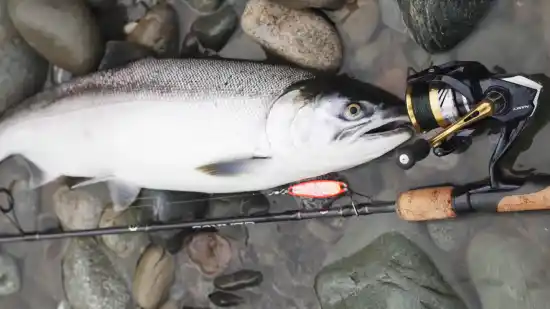
For salmon fishing, the recommended line capacity for your reel is typically around 300 yards or more. This ample line capacity is essential because salmon are known for their powerful runs, and having enough lines can prevent them from breaking free during intense battles.
Quality fishing line is a wise investment as it can withstand the wear and tear of salmon rubbing against it in their efforts to escape. Keep in mind that the specific line capacity you choose might also depend on the size of the rod and reel you’re using, as well as your personal preferences.
However, having a line capacity of at least 300 yards provides a good starting point to ensure you’re well-equipped for salmon fishing.
Catch Salmon Like a Pro with the Right Reel Size
When choosing the right reel size for salmon fishing, it all boils down to personal preference and the specific factors at play. Whether you opt for a small, medium, or large reel, the key is to align it with your target salmon species, fishing location, technique, and line capacity needs. Each reel size has its advantages, from the precision casting of small reels to the power and line capacity of larger ones.
Maintaining your salmon fishing reel is just as vital as selecting the right size. Regular cleaning, proper lubrication, and line replacement will ensure your reel stays in prime condition.
Using the perfect reel size and proper care, you’re well-equipped to tackle those thrilling salmon fishing adventures and land those prized catches successfully.

